Inside the Rise of Acura's Radical ARX-06

You can instantly recognize the Acura ARX-06 by the sound it makes as it enters a corner. Not the explosive, naturally-aspirated V-8 crescendo that its Cadillac V-Series.R competitor makes on the exits of those same corners, but an otherworldly clicking. Less of a car noise, more like the noise made by the titular monster in The Predator. It is far from the car's signature development feature, but, in an IMSA GTP field of four separate brand-new hybrid prototypes, it is the one you cannot miss.
Like everything else on the car, it serves a very specific purpose. Specifically, Honda Performance Development president David Salters says that the repetitive sound is the audible result of a strategy to keep many separate goals in harmony by maximizing energy harvesting in the hybrid system, keeping the car predictably balanced, preparing the entire powertrain to deliver maximum acceleration ability when called upon, and protecting the complicated hybrid system by keeping a predictable frequency throughout the corner. Generally, though, the purpose of the sound is the same as the purpose of every other thing on the car: to maximize what HPD can do to gain an advantage over its competitors while staying within the spirit of the most interesting set of regulations in racing today.
The 2022 IMSA season, the last of the DPi era, ended with its traditional final stop at Road Atlanta on October 1st. Just two days later, three of the four GTP manufacturers met for their first officially-sanctioned test in a new era. Acura had just wrapped up its most successful stint in American racing, ever: Over the past four years, the outgoing ARX-05 had won three DPi championships, two 24 hour races at Daytona, and the previous weekend's Petit Le Mans. The ARX-06 that would replace it had only existed in any representative physical form since mid-July, two and a half months before the group test.
Porsche and BMW have chosen one team to run the entirety of their North American GTP factory operations. Acura's factory program has a very different structure. The team has two single-car factory teams, Wayne Taylor Racing and Meyer Shank Racing. In the race two days before the test, the pair fought head-to-head with the season championship on the line. Now, each has their own ARX-06 in an Acura test livery with flashes of their factory colors. Each needs to cooperate in order to develop the car.
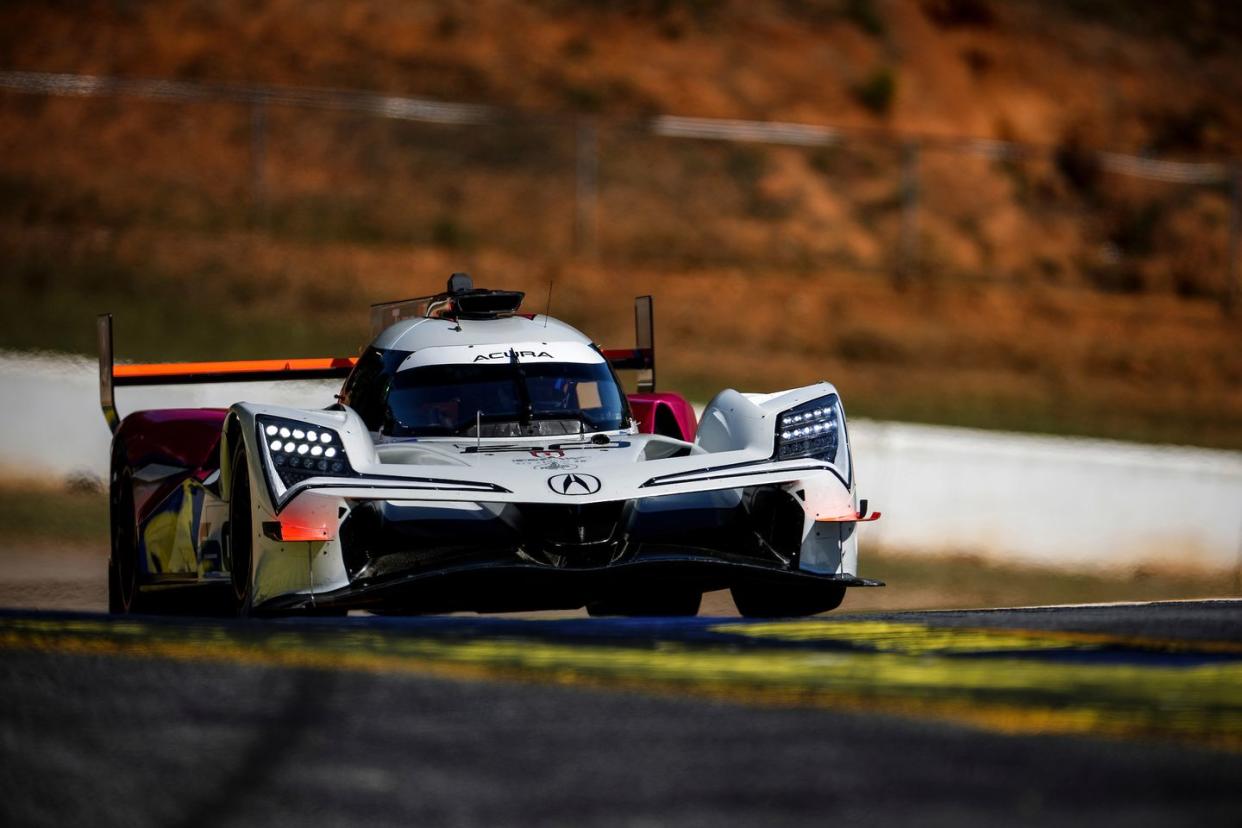
Salters, a very tall and very British man, was the head of engine development at Ferrari Formula 1 from 2006 to 2015. Before that, he worked with Mercedes and Ilmor on 3.0-liter V-10s that reached around 19,000 RPM. Even for someone with his experience, the GTP class and the LMDh rule set behind most of its entries are a new frontier.
"These cars are very sophisticated," Salters notes in an RV at a fairly empty track. "They’re basically LMP1 cars, with full electrified powertrains. It’s a stretch, that’s the good bit. It’s a stretch for all the men and women that work on them here, our engineers and technicians."
"The whole car is new. The previous DPi was derived from an LMP2. This is a brand new car. The spine will go to LMP2, but everything is new. We have a new powertrain, everything is new. Electronics, we basically have F1 spec electronics on this car. The lovely thing about this championship is you can write all your own software. In terms of ICE control, hybrid control, brake-by-wire, energy management… We write all of that in house. So, the scope of all that, you can make as big as you want to make it. It’s a real challenge, which is brilliant. That’s what we do, that’s what we’re looking for.”
The two ARX-06s on track certainly look like complete racing cars, but journalists at the test are advised not to get too close to the cars, as they are far from homologation and are both far more proprietary and far less complete than they will be come the 2023 season. Each car completes a successful run, but both are done running by the middle of the afternoon; as Meyer Shank Racing co-owner Michael Shank would share in a documentary created by HPD, at least one of the cars was significantly damaged in a crash caused by a mechanical failure.
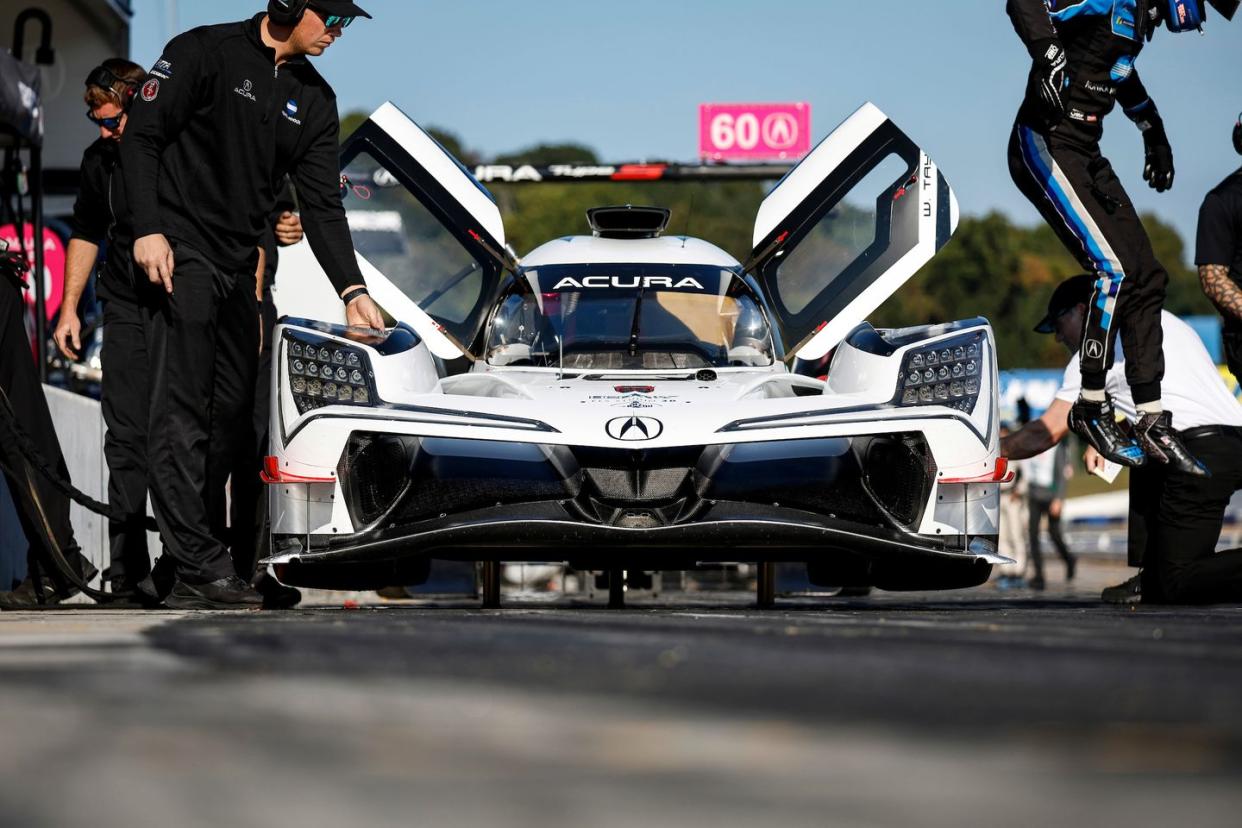
Over the next few months of testing, the tone at all four manufacturers is long-term optimism and short-term concern. The regulations work, the cars exist, and Audi's departure to focus on Formula 1 meant that only one of the five manufacturers that had initially signed up to race in the class for the 2023 season had failed to produce a viable car. Reliability, however, remains a major concern. The hybrid system, and the motor-generator unit in particular, seems like a likely failure point in a 24 hour race.
When the teams reconvene for another group test at Daytona in December, consistent jokes about an LMP2 car winning are starting to sound less like jokes. Between sessions, batteries and other hybrid components that would otherwise fit within the car show up in previously-empty parts of garages.
The Acura sports car program has kept the ARX naming convention since ARX-01, a world-beating open-top LMP2 car that fought for overall wins against Porsche and Audi in an era of the American Le Mans Series where LMP2 cars were expected to be competitive with the larger LMP1 entries on certain tracks. The ARX-01's success led Acura to make the ambitious leap to the ARX-02, its first LMP1 car.
With a single fortunate lap, the ARX-02 qualified on pole for the 2009 12 Hours of Sebring over the powerhouse Peugeot 908 HDi FAP that would win Le Mans that year and the debuting Audi R15 that would win the 2010 race after a set of significant evolutions. Unfortunately, Audi and Porsche had both abandoned full-season competition in the ALMS a year earlier. The LMP1 class itself folded in America the next year, replaced by a unique rule set that balanced LMP1 cars with LMP2 entries in all but the category's most important endurance races. Acura parked the ARX-02 and let its customers return to the ARX-01 LMP2 car for the 2010 season. That started a decade-long divergence between the top classes of sports car racing in American and Europe, one that lasted all the way until the end of 2022.
That changed at this year's 24 Hours of Daytona. As of today, the LMDh cars designed for IMSA racing and the LMH cars designed for FIA World Endurance Championship racing are both now officially eligible to race in the other's top class. Only LMDh cars have entered Daytona, and the ARX-06 stands out as the most ambitious of the group.
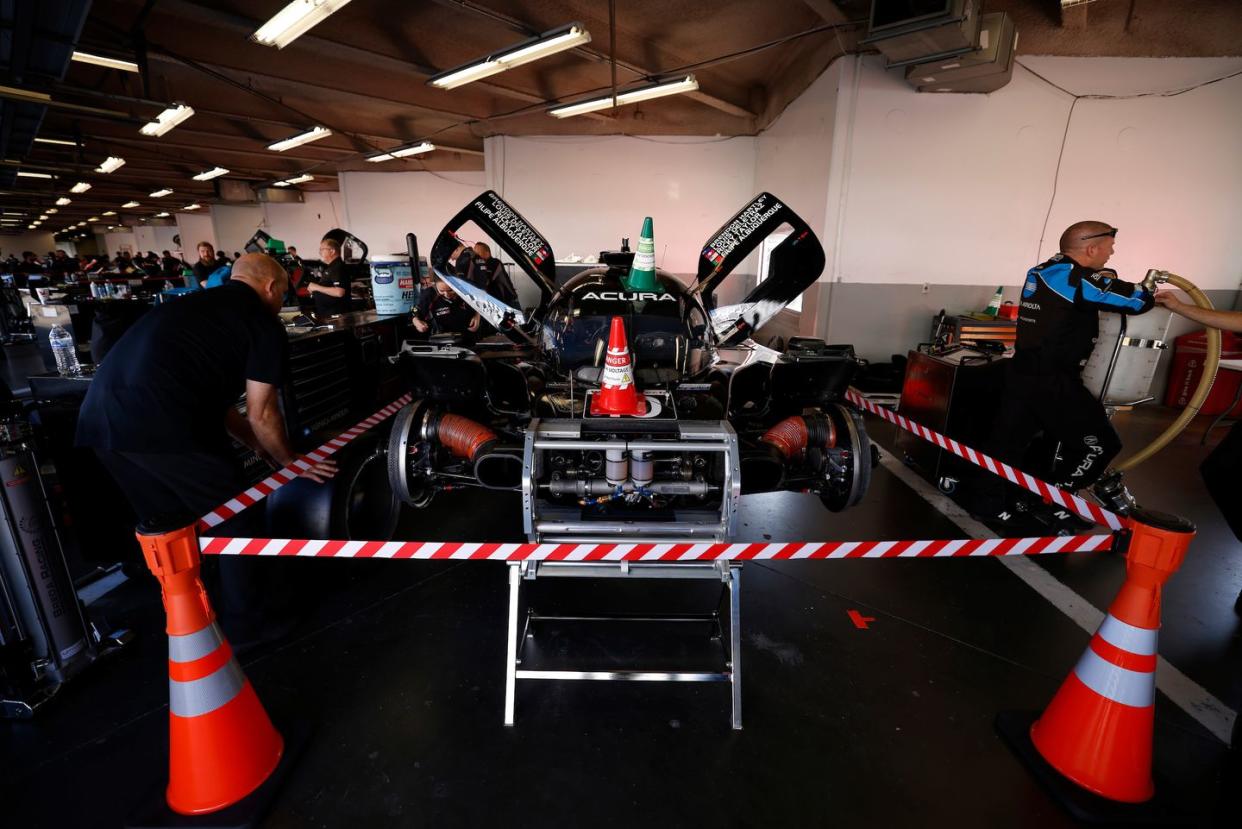
Both BMW and Porsche have decided to build their new internal combustion engines around existing racing powertrains. Acura has gone the exact opposite direction, instead choosing to base its bespoke turbocharged V-6 around Honda's planned 2.4-liter IndyCar engine. The engine was set to debut in 2024, but those plans have changed. That decision, ironically, came during the first day of the four manufacturer group test at Daytona.
The suspension is a bold choice, too. While front suspension designs meant to offer teams substantial control of individual heave and roll motions are standard in the new class, only Acura has opted to integrate that level of control into the rear suspension with a more radical pushrod design. Although most of the car's downforce is produced in the floor, the Acura's startling exterior design makes it the only car on the grid with a visible front wing above its splitter. Both Cadillac and Porsche have opted for more traditional, visibly closed designs. BMW has chosen to direct air to a piece of bodywork hidden behind its massive, open kidney grilles.
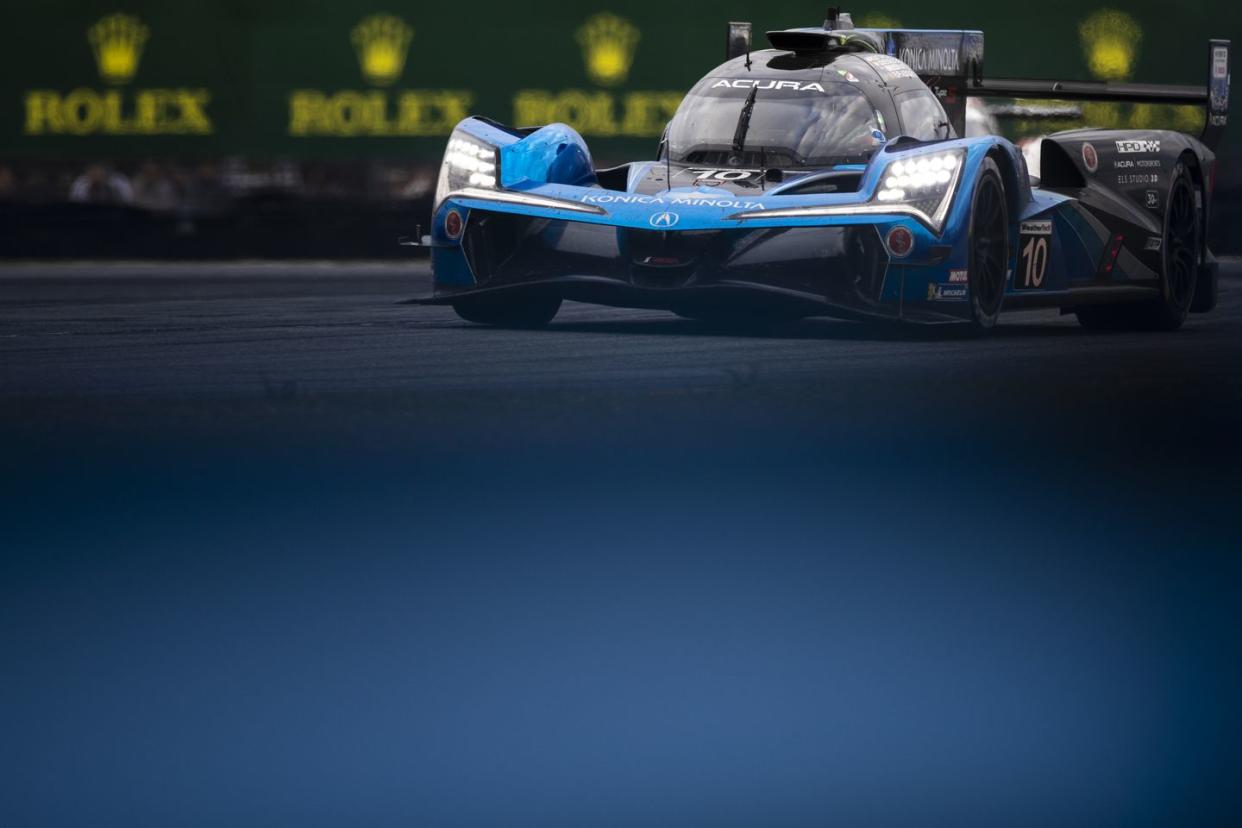
All of those choices are deliberate. Not just at Acura, but at every manufacturer competing in the stringent category. The series regulates both power output and total downforce levels in a well-defined "box" tracked by sophisticated systems, so these decisions are generally bout optimizing other goals. So why, exactly, did Acura take so many risks?
Control.
While the series is very strict in exactly how much power and grip an LMDh car can have, it is very open about how teams can manage the car. The suspension plays into this, with Salters claiming that the freedom to implement a unique design allows the team to improve mechanical grip from the ARX-05 while retaining that car's relative aerodynamic strength. Complete access to control software is the bigger advantage, though.
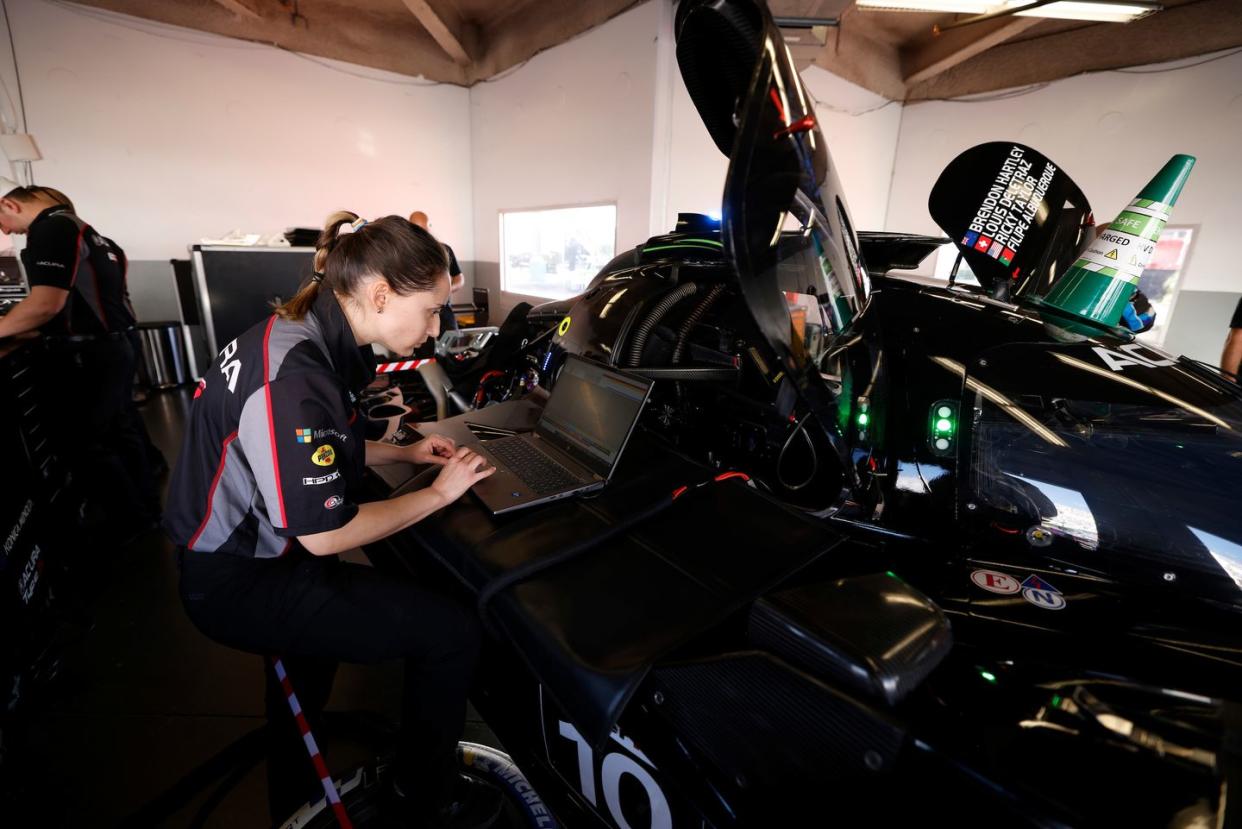
Brake-by-wire, traction control, and management of both the engine and the hybrid system are all fair game for manufacturers. Together, those tools can be utilized in concert to balance a wide variety of divergent goals. Both the suspension and aerodynamic platform were designed with these tools in mind, allowing teams and drivers to keep the car in its ideal state to both produce grip and put down power at all times. That can be further fine tuned for a specific corner on a specific track. In practice, it can sound like the sputtering the car produces on corner entry at Daytona.
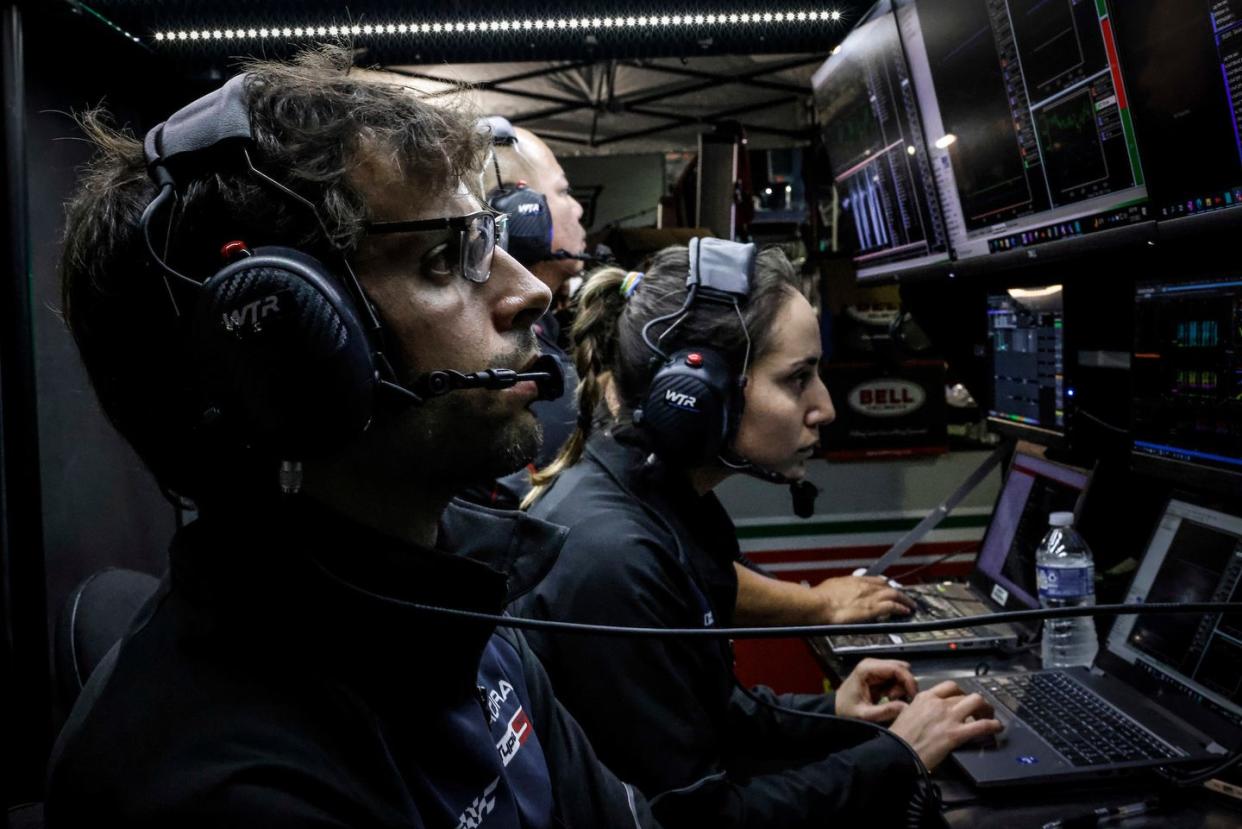
Tight turnaround times at each manufacturer meant that all had designed a very deliberate plan to build their car and none were where they wanted to be by the time IMSA's official pre-season test, the Roar Before the 24, rolled along in mid-January. With the race a week away, each manufacturer had the weekend to run a few more sessions and prepare to end the test with a qualifying session that would set the grid for the upcoming race.
The session was competitive, with every single car that ran a competitive lap clocking in with a time that started with 1 minute and 34 seconds. Meyer Shank Racing driver Tom Blomqvist took pole for Acura by less than a tenth of a second.
This time, Salters speaks to a room of gathered media at Acura's suite overlooking the Daytona trioval. It is the day before the race, the ARX-06 is on pole, and it is no longer a secret that the program has found substantial speed. With balance of performance adjustments not yet made to equalize the four cars in the class on debut, the Acura had outqualified its competitors from Porsche, Cadillac, and BMW. His pride in the finished product is evident.
"It’s a team game, and the real privilege of what we do is you get to work with a lot of very smart people to make these cars fast," Salters beams. "So, what was particularly rewarding, we had two years of working day and night to make this the best we can and we stuck it on pole this weekend. And beat Porsche, so that’s pretty good... They’ve got a rough idea of what they’re doing, Porsche have been doing the sports car thing for some time. In a fair fight, everything was equal, [balance of performance] was equal, in a fair fight, we managed to beat Porsche [in] qualifying."
"As an engineer, qualifying is something you actually derive more pleasure, you derive more pleasure from taking pole than from winning the race. Winning the race is great, it’s what we do, but lots of stuff happens in the race, especially over 24 hours. Qualifying is pretty much the demonstration of pure performance. And it was close, so it was really fun."
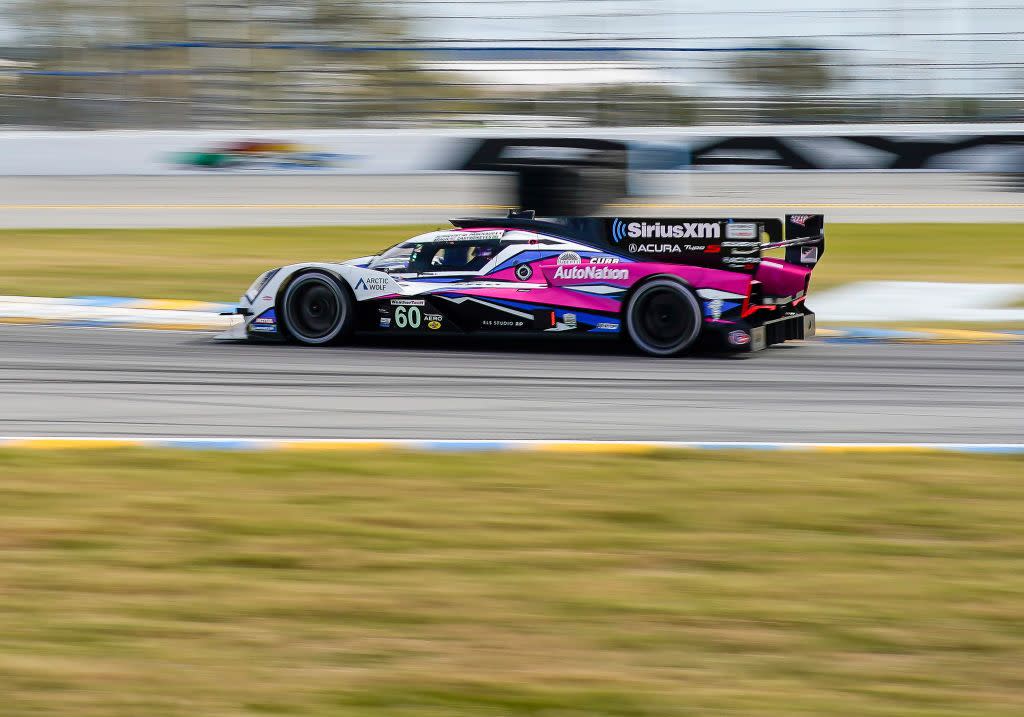
But the rushed development of all four GTP cars is no secret, and ongoing reliability concerns have all six teams entered in the race concerned that they may not finish. The consensus is that nine total GTP cars will be enough for one entry from the class to win, but reliability is expected to be as important as speed.
On race day, the Acuras lead early and often. Hybrid issues would ultimately hit just two of the nine GTP cars, but the Acuras have their own share of minor issues. The pole-sitting ARX-06, the Meyer Shank car, undergoes a fluid flush on the pit lane every few hours. Shank would later admit that the car had a pervasive gearbox issue, one that they expected would eventually knock the leading ARX-06 out of the race.
Outside of the confines of the Acura garages, those feared hybrid issues start to pop up. A BMW M Hybrid V8 is pushed behind the wall before sunset, and a Porsche 963 requires a battery change overnight. Other issues knock the other Porsche, the other BMW, and the No. 31 Cadillac off the lead lap. In the final hours, it sets up a four-car race between the two Acuras and the two remaining Cadillacs.
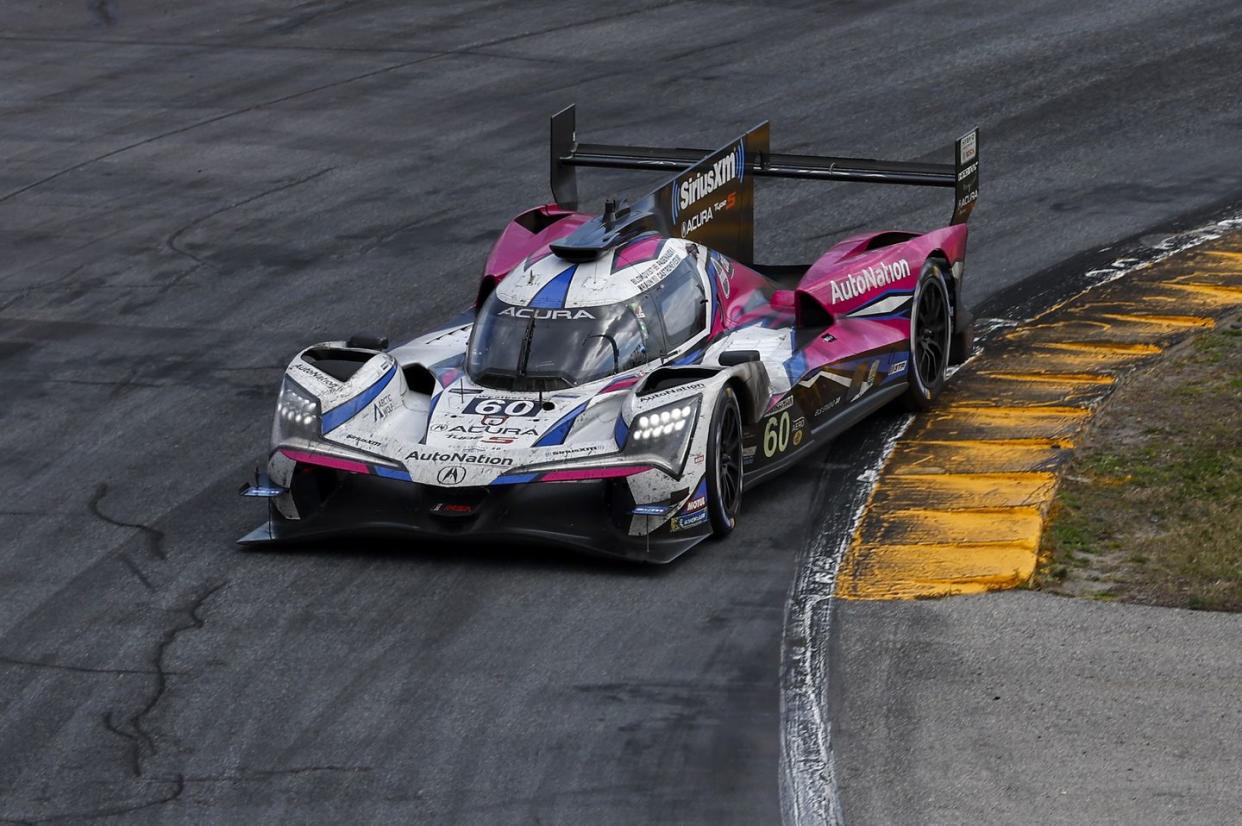
With the gearbox staying together overnight and into the afternoon, Meyer Shank Racing driver Tom Blomqvist seems to find speed nobody else on the track can match in the day's final stint. Blomqvist would handily beat out the No. 10 ARX-06 of Wayne Taylor Racing, leading a 1-2 on debut. The MSR team was later found to be manipulating tire pressure data, resulting in a major penalty that docked the team hundreds of points but allowed it to keep the win. The Wayne Taylor car was not penalized, and its pace was comfortably enough to hold off Cadillac's best without any sort of tire pressure advantage.
Cadillac and Porsche will compete in the 24 Hours of Le Mans with their LMDh-spec cars this season, and BMW is set to join them after it launches an FIA World Endurance Championship program of its own in 2024. Acura, however, has not announced any plans to go racing in Europe with either its own badge or the Honda badge that would be more relevant outside of the North American market. Back in October, Salters noted that "It's eligible to go, it meets the rules, but our responsibility is Acura, in the U.S., racing here. Let's do a good job of that, then we'll worry about other things."
Now that the ARX-06 is a winner, it may soon be time to start worrying about other things.
You Might Also Like
